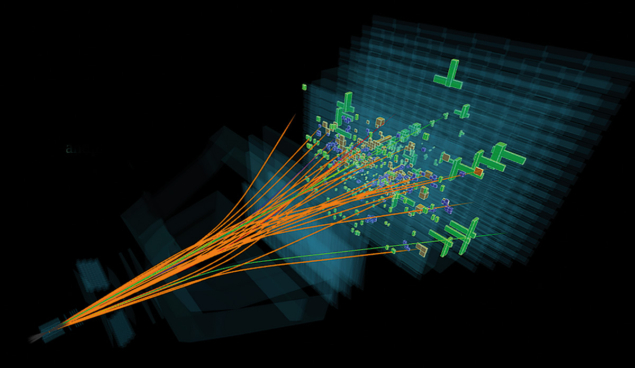New Physics in b Decays, by Marina Artuso, Gino Isidori and Sheldon Stone, World Scientific

There are compelling reasons to believe that the Standard Model (SM) of particle physics, while being the most successful theory of the fundamental structure of the universe, does not offer the complete picture of reality. However, until now, no new physics beyond the SM has been firmly established through direct searches at different energy scales. This motivates indirect searches, performed by precision examination of phenomena sensitive to contributions from possible new particles, and comparing their properties with the SM expectations. This is conceptually similar to how, decades ago, our understanding of radioactive beta decay allowed the existence and properties of the W boson to be predicted.
New Physics in b decays, by Marina Artuso, Gino Isidori and the late Sheldon Stone, is dedicated to precision measurements in decays of hadrons containing a b quark. Due to their high mass, these hadrons can decay into dozens of different final states, providing numerous ways to challenge our understanding of particle physics. As is usual for indirect searches, the crucial task is to understand and control all SM contributions to these decays. For b-hadron decays, the challenge is to control the effects of the strong interaction, which is difficult to calculate.
Both sides of the coin
The authors committed to a challenging task: providing a snapshot of a field that has developed considerably during the past decade. They highlight key measurements that generated interest in the community, often due to hints of deviations from the SM expectations. Some of the reported anomalies have diminished since the book was published, after larger datasets were analysed. Others continue to intrigue researchers. This natural scientific progress leads to a better understanding of both the theoretical and experimental sides of the coin. The authors exercise reasonable caution over the significance of the anomalies they present, warning the reader of the look-elsewhere effect, and carefully define the relevant observables. When discussing specific decay modes, they explain their choice compared to other processes. This pedagogical approach makes the book very useful for early-career researchers diving into the topic.
The book starts with a theoretical introduction to heavy-quark physics within the SM, plotting avenues for searches for possible new-physics effects. Key theoretical concepts are introduced, along with the experiments that contributed most significantly to the field. The authors continue with an overview of “traditional” new-physics searches, strongly interleaving them with precision measurements of the free parameters of the SM, such as the couplings between quarks and the W boson. By determining these parameters precisely with several alternative experimental approaches, one hopes to observe discrepancies. An in-depth review of the experimental measurements, also featuring their complications, is confronted with theoretical interpretations. While some of the discrepancies stand out, it is difficult to attribute them to new physics as long as alternative interpretations are not excluded.

The second half of the book dives into recent anomalies in decays with leptons, and the theoretical models attempting to address them. The authors reflect on theoretical and experimental work of the past decade and outline a number of pathways to follow. The book concludes with a short overview of searches for processes that are forbidden or extremely suppressed in the SM, such as lepton-flavour violation. These transitions, if observed, would represent an undeniable signature of new physics, although they only arise in a subset of new-physics scenarios. Such searches therefore allow strong limits to be placed on specific hypotheses. The book concludes with the authors’ view of the near future, which is already becoming reality. They expect the ongoing LHCb and Belle II experiments to have a decisive word on the current flavour anomalies, but also to deliver new, unexpected surprises. They rightly conclude that “It is difficult to make predictions, especially about the future.”
The remarkable feature of this book is that it is written by physicists who actively contributed to the development of numerous theoretical concepts and key experimental measurements in heavy-quark physics over the past decades. Unfortunately, one of the authors, Sheldon Stone, could not see his last book published. Sheldon was the editor of the book B decays, which served as the handbook on heavy-quark physics for decades. One can contemplate the impressive progress in the field by comparing the first edition of B decays in 1992 with New Physics in b decays. In the 1990s, heavy-quark decays were only starting to be probed. Now, they offer a well-oiled tool that can be used for precision tests of the SM and searches for minuscule effects of possible new physics, using decays that happen as rarely as once per billion b-hadrons.
The key message of this book is that theory and experiment must go hand in hand. Some parameters are difficult to calculate precisely and they need to be measured. The observables that are theoretically clean are often challenging experimentally. Therefore, the searches for new physics in b decays focus on processes that are accessible both from the theoretical and experimental points of view. The reach of such searches is constantly being broadened by painstakingly refining calculations and developing clever experimental techniques, with progress achieved through the routine work of hundreds of researchers in several experiments worldwide.





